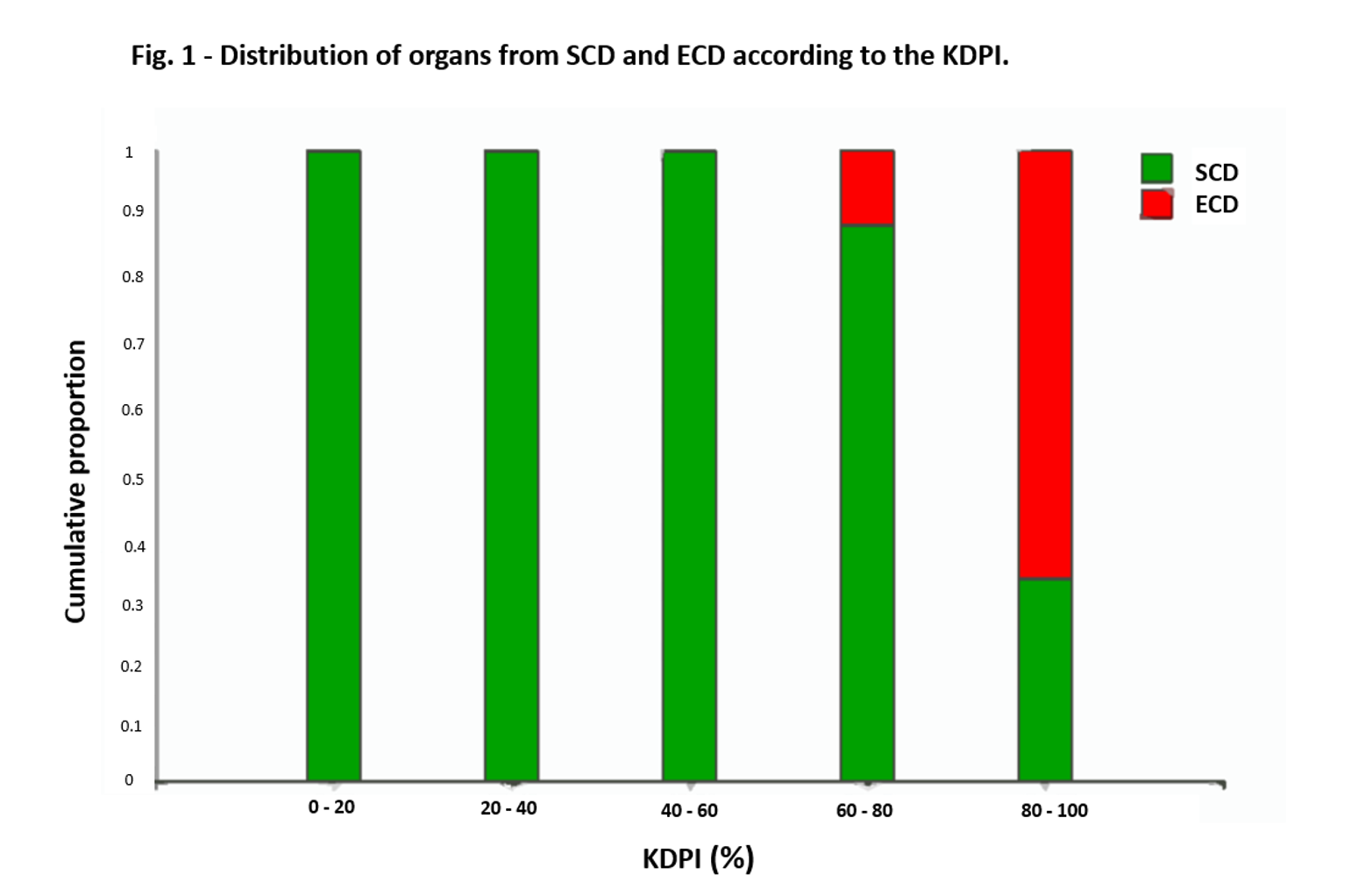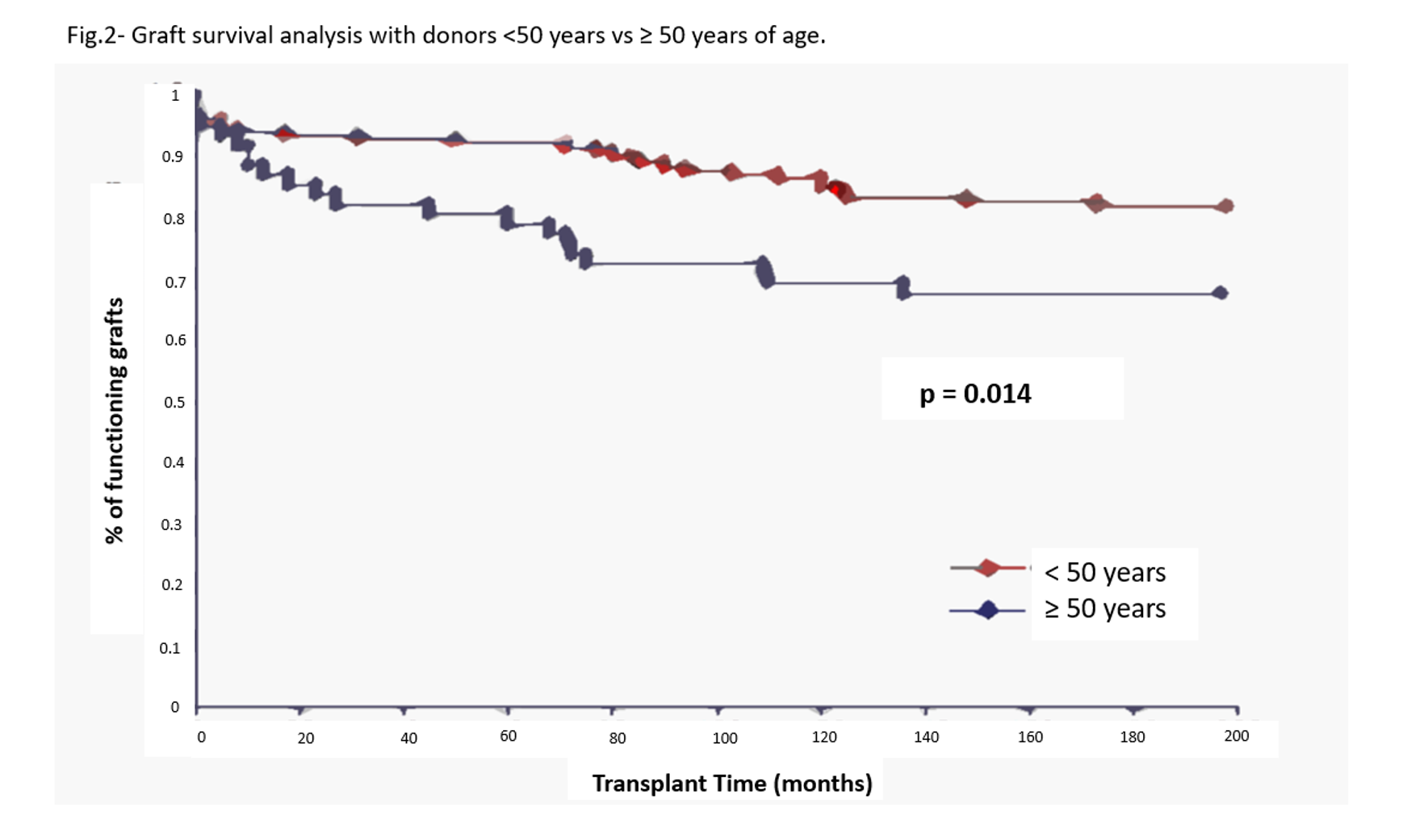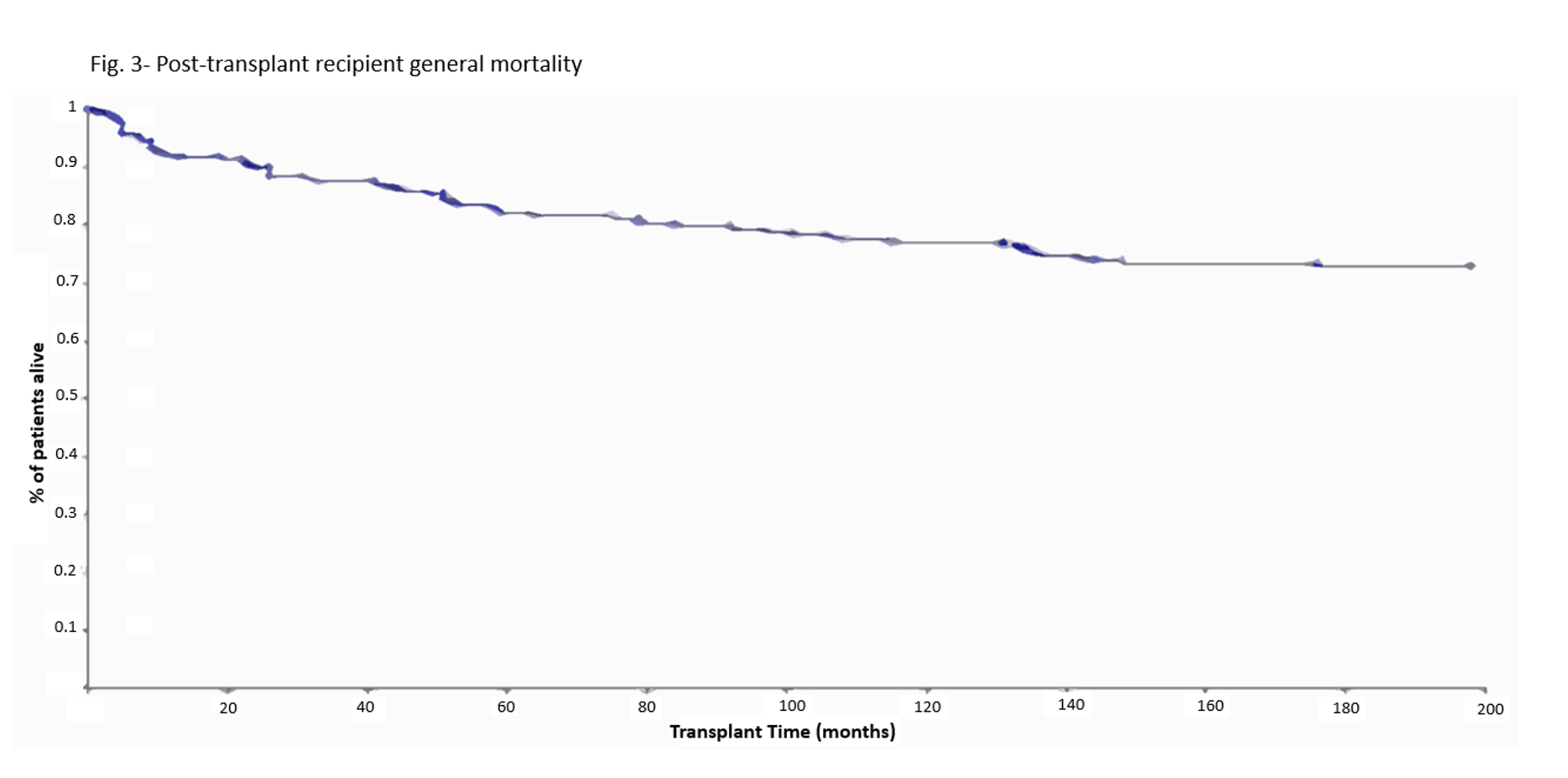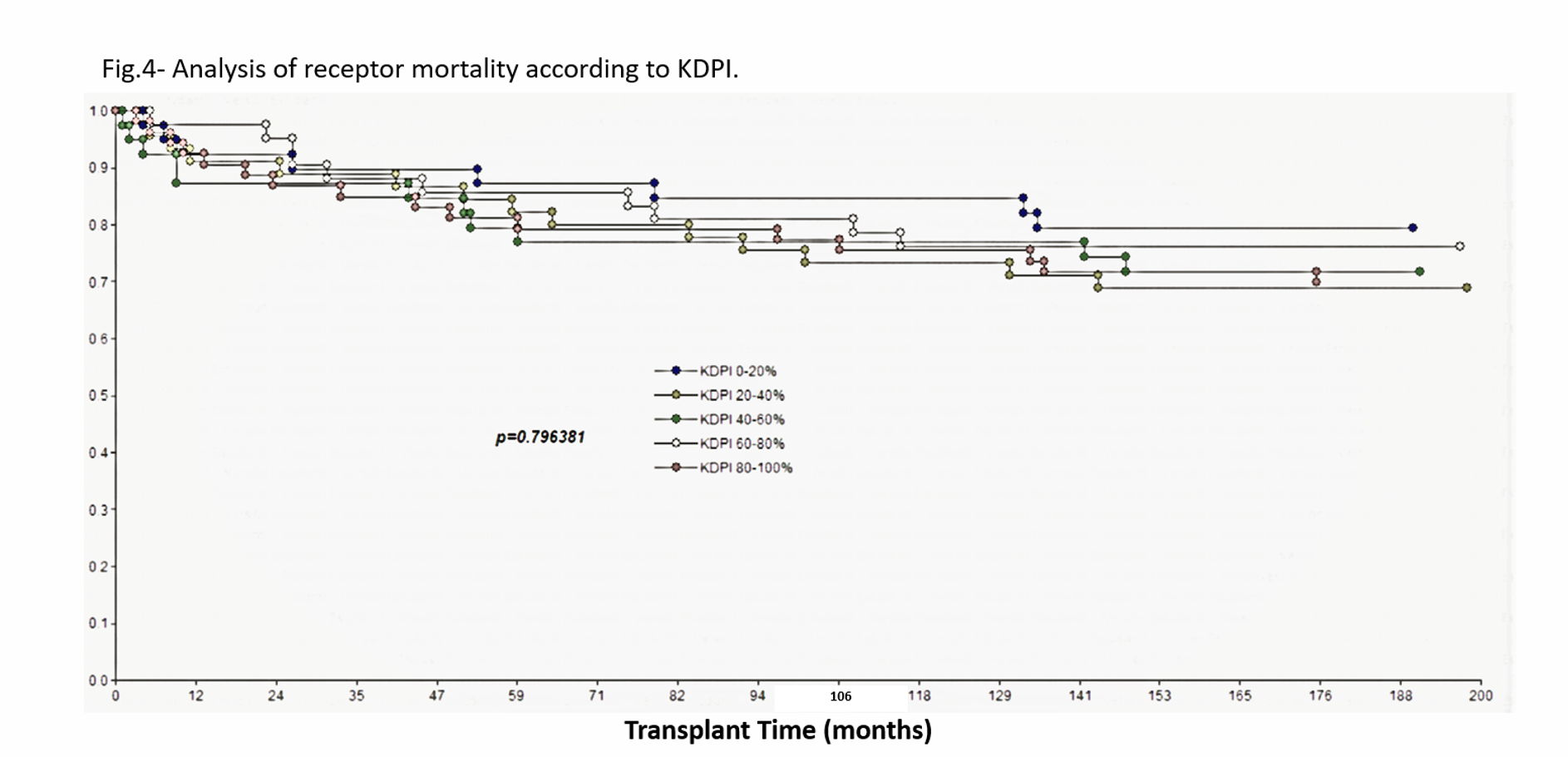Does the Kidney Donor Profile Index (KDPI) predict graft and patient survival in our population? Experience of a transplant center in Argentina
Rafael A. Maldonando1, Natalia S. Matamala1, Carlos A. Idoria1, Marisol Rodriguez1, Monica Piccardi2, Maria Dionisi1.
1Nephrology and Transplantation Division, Clinica Privada Velez Sarsfield, Cordoba, Argentina; 2Statistics and Biometrics, Faculty of Agricultural Sciences, National University of Cordoba, Cordoba, Argentina
Introduction: To verify the usefulness of the renal donor profile index (KDPI) developed by the US organ donation system as a predictor of renal graft survival in our environment and to analyze the mortality of the recipients according to the KDPI.
Methods: Retrospective, descriptive, longitudinal study of transplanted patients from our center since December 2001 to December 2014. Exclusion criteria: recipients with less than 1 year of follow-up, living donor recipients. Based on data from SINTRA (Sistema Nacional de Información de Procuración y Trasplante de la República Argentina), the KDPI was calculated. Survival analysis was performed using Kaplan-Meier curves.
Results: 218 patients were analyzed, donor age: 38.9 ± 16.1 years, recipient age: 45.72 ± 12.5 years; 70.8% of the donors were not hypertensive and 0.5% were diabetic, resulting in a KDPI of 53 ± 29%; 81.2% were standard donors and 18.8% with expanded criteria (Fig.1). Those under 50 years old had better graft survival (p = 0.014) (Fig.2). After a follow-up of 88 ± 22 months, the survival of the recipient was 98% the first year, 80% at 5 years and 73% at 16.5 years (Fig.3). It was also observed that these receptors presented different levels of survival as the KDPI increased, but was not statistically significant (p = 0.79) (Fig.4).
Conclusion: In our experience, the KDPI was limited to be considered as a tool for evaluating the quality of the kidney due to certain limitations; however, it would be appropriate to develop an index based on Argentinian or Latin-American data and the correlation with their receptor scores.




There are no comments yet...
